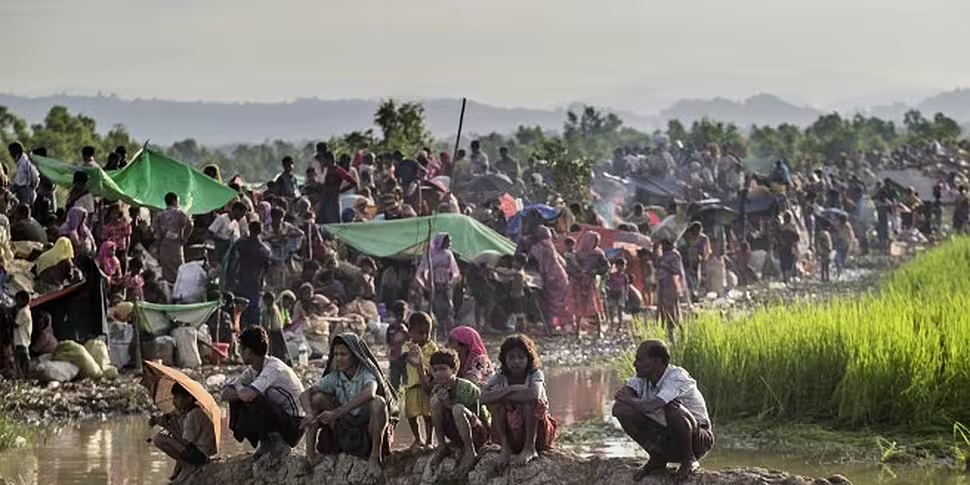Satellite images have emerged that allegedly prove Rohingya villages were torched after Myanmar said "clearance operations" had ceased.
The pictures from Human Rights Watch (HRW) appear to show burnt out patches of ground where buildings used to stand.
The organisation said the images reveal that at least 288 villages have been partially or totally destroyed by fire in northern Rakhine State in Myanmar since the 25th August 2017 - when the latest wave of violence against the minority began.
At least 66 of those villages were burned after September 5th, according to the human rights group - the date after which the country's leader Aung San Suu Kyi said there were "no armed clashes and no clearance operations."
She said in a live televised speech on 18 September: "Since September 5th, there have been no armed clashes and no clearance operations.
"We are concerned to hear that numbers of Muslims are fleeing across the border to Bangladesh," she said.
"We want to find out why the exodus is happening. We would like to talk to those who have fled, and those who have stayed - more than 50% of villages of Muslims are intact and are as they were before the attacks took place."

Multiple villages on fire along the coast of Maungdaw Township, Burma on the morning of September 15, 2017. Image: 2017 Human Rights Watch
More than half a million Rohingya minority Muslims have fled across the border to Bangladesh to escape what they say is brutal treatment at the hands of Myanmar's security forces.
Amnesty International this morning warned that there has been a campaign of "crimes against humanity" against the minority.
Myanmar's media has reported that the "clearance operations" were to uncover "terrorist training" camps in the Mayu mountains in Rakhine state.
Human Rights Watch analysed a total of 866 villages in Rakhine State and found that up to 90% of villages were destroyed in some subareas between August 25th and September 25th.
In many places, satellite imagery showed multiple areas on fire, burning simultaneously over wide areas for extended periods, HRW said.
Many of the villages had both Rohingya and another ethnic group, the Rakhine, living in separate, segregated communities.
They found the Rakhine-occupied areas were left untouched by the fires.

Ethnic Rohingya village completely destroyed adjacent to intact ethnic Rakhine village in Maungdaw Township, Burma. Image: Human Rights Watch
The government of Myanmar (also called Burma) has claimed that insurgents and the Rohingya themselves have been responsible for the fires - but has offered no evidence to support the claims.
The NGO said it had carried out interviews with more than 100 refugees who have fled the townships alleged to have been badly burned, none of which suggested Rohingya were responsible.
Phil Robertson, HRW's deputy Asia director, said: "These latest satellite images show why over half a million Rohingya fled to Bangladesh in just four weeks.
"The Burmese military destroyed hundreds of Rohingya villages while committing killings, rapes, and other crimes against humanity that forced Rohingya to flee for their lives.
"The shocking images of destruction in Burma and burgeoning refugee camps in Bangladesh are two sides of the same coin of human misery being inflicted on the Rohingya.
"Concerned governments need to urgently press for an end to abuses against the Rohingya and ensure that humanitarian aid reaches everyone in need."

Map of villages destroyed in Maungdaw, Buthidaung, and Rathedaung Townships. Image: 2017 Human Rights Watch
Reporting from IRN ...









